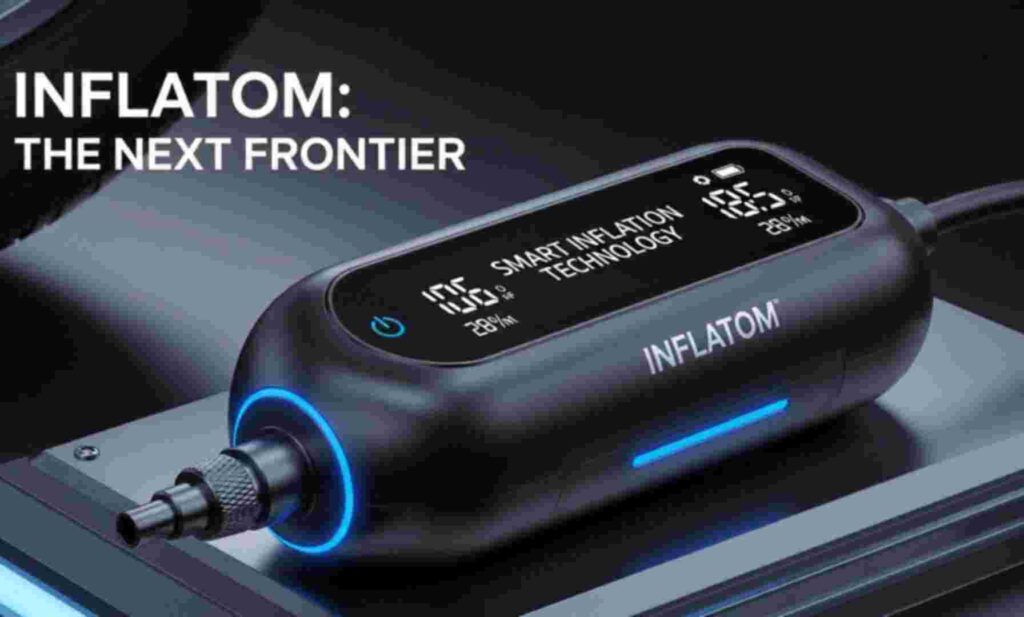In a world increasingly defined by digital transformation and real-time adaptability, a new term is quietly making waves across industries: Inflatom. Whether you’re a tech enthusiast, business leader, or simply curious about future-forward technologies, this deep dive into Inflatom will unpack what it is, why it matters, and how it’s poised to reshape everything from logistics to wearable tech.
What Is Inflatom?
At its core, Inflatom is a portmanteau of “inflate” and “automation” — referring to intelligent, self-regulating inflation technology. Think of it as a smart material system or engineered product that can automatically adjust air pressure, gas volume, or structural shape based on environmental inputs or user commands.
These systems rely on embedded sensors, actuators, and programmable algorithms that give them the capacity to autonomously adapt in real time. In practical terms, that could mean anything from a self-inflating life raft that adjusts for weight distribution, to a sneaker sole that alters its cushioning depending on the terrain.
Inflatom is not a brand, but an emerging technological concept—a next-gen framework that’s currently being tested, refined, and, in some industries, already deployed.
The Origins and Evolution of Inflatom
The roots of Inflatom trace back to developments in soft robotics, biomimicry, and adaptive materials. Over the last decade, research labs across the world have been experimenting with inflatable robotics that mimic the movement of muscles and organic tissues. These experiments laid the groundwork for Inflatom-based designs that are now moving beyond labs and into consumer and industrial applications.
By 2023, several companies began filing patents around adaptive pneumatic systems—early versions of Inflatom. In 2024, DARPA and MIT Media Lab both announced pilot programs to test Inflatom-like materials in wearables and defense gear. And now, in 2025, Inflatom is being seriously considered for next-gen space suits, automotive interiors, and even sportswear.
How Inflatom Works: A Breakdown
1. Sensors and Feedback Loops
Inflatom systems are loaded with miniature sensors—temperature, pressure, motion, and even biometric sensors—that gather real-time data from their environment or user.
2. Programmable Logic
Embedded microcontrollers interpret sensor data using custom software rules. For example, if external pressure drops (say at high altitude), the system might trigger internal inflation to maintain stability or structural integrity.
3. Smart Actuators
Actuators then carry out instructions—by inflating or deflating air pockets, changing shape, or shifting the volume of internal gas—creating immediate adaptation.
Example: A camping mattress with Inflatom tech might harden when laid on uneven ground, then soften once it senses full body weight for comfort.
Real-World Applications of Inflatom Technology
Inflatom isn’t just a lab curiosity—it’s already making waves in multiple industries. Here’s where it’s being deployed or tested:
1. Wearable Technology
Companies like Nike and Under Armour are exploring Inflatom-infused midsoles and insoles that adapt to walking, running, or standing. Think personalized comfort, durability, and injury prevention.
Case Study: In early 2025, a startup named AirMorph launched a shoe prototype with Inflatom technology. It adjusts arch support dynamically and was worn by athletes in the Boston Marathon.
2. Healthcare & Rehabilitation
Inflatom tech is being explored in compression garments, orthotic devices, and mobility aids that adapt to patient needs. For example, a knee brace that tightens or relaxes based on muscle fatigue signals.
3. Aerospace and Defense
NASA’s research into Inflatable Habitat Modules for Mars has adopted Inflatom-style sensors to maintain internal pressure and shape autonomously. Similarly, defense wearables that protect against shock or ballistics are testing inflatable shielding.
4. Automotive Interiors
Future cars may use Inflatom-enabled seats that morph for ergonomic posture based on driver fatigue detection, or inflatable safety zones that anticipate impact and respond milliseconds before airbags deploy.
5. Consumer Goods
From self-adjusting pillows to backpacks that reshape for better weight distribution, Inflatom is seeping into everyday goods with the promise of intelligent ergonomics.
Key Benefits of Inflatom
| Feature | Benefit |
|---|---|
| Self-Adjusting Inflation | Eliminates need for manual pumps or pressure adjustments |
| Adaptive Comfort | Enhances user experience in wearables, furniture, and more |
| Lightweight Flexibility | Ideal for mobile, portable, and constrained environments |
| Energy Efficiency | Only uses power when adjustments are needed, preserving battery life |
| Safety Enhancements | Rapid inflation/deflation can mitigate shock, pressure, or force impact |
Challenges and Limitations
While Inflatom holds incredible promise, it’s not without obstacles:
1. Durability Concerns
Flexible materials tend to degrade faster than solid counterparts. Ensuring that Inflatom systems can withstand years of wear, pressure, and exposure is critical.
2. Power Requirements
Though energy-efficient, some models still rely on small batteries or kinetic energy—creating limits in remote or low-resource environments.
3. Cost & Accessibility
High-end sensors and microprocessors aren’t cheap. Currently, Inflatom tech is mostly confined to prototypes and premium products.
4. Maintenance Complexity
When something goes wrong, diagnosing and fixing a system that’s self-inflating via sensors can be more complex than traditional products.
Future of Inflatom: What’s Coming in 2025 and Beyond
Looking ahead, Inflatom’s trajectory is promising, especially as miniaturization, AI, and material science continue to evolve.
Trends to Watch:
-
AI-Augmented Inflatom: Systems that not only react but also predict when changes will be needed.
-
Open-Source Inflatom Frameworks: Developer kits allowing custom Inflatom applications in small-scale startups or DIY products.
-
Integration with Smart Homes: Imagine a couch that reshapes itself based on your posture or mood, or beds that inflate lumbar zones if snoring is detected.
Experts estimate that by 2027, Inflatom-enabled consumer products will account for over $2.3 billion in annual sales, driven largely by health tech, adaptive wearables, and next-gen outdoor gear.
Actionable Insights: How to Leverage Inflatom as a Business or Innovator
If you’re a startup founder, R&D leader, or product designer, here’s how you can start thinking about Inflatom:
-
Identify Friction Points: Where do your users manually adjust something—comfort, pressure, shape? That’s an Inflatom opportunity.
-
Partner Early: Work with universities or labs already exploring Inflatom-compatible tech. Avoid reinventing the wheel.
-
Start with Hybrid Models: Combine traditional design with a small Inflatom component—like an inflatable lumbar zone in an office chair—before going full-scale.
-
Use Real Feedback Loops: Don’t guess what users need. Integrate data-driven sensors and let Inflatom adjust based on real usage.
Conclusion: Inflatom Is More Than a Buzzword
Inflatom is not a trend—it’s a quiet revolution in responsive design. By enabling objects to adapt intelligently to human behavior and environmental changes, Inflatom challenges the very idea of static design.
As we head deeper into a world defined by personal optimization, sustainable materials, and adaptive tech, Inflatom will be central to the products we wear, drive, sleep on, and live with.
Whether you’re innovating, investing, or simply curious, now is the time to watch this space—and perhaps, inflate your ideas accordingly.
Frequently Asked Questions (FAQs)
Q1: Is Inflatom a patented product or an open technology?
No, Inflatom isn’t a single patented product or brand. It’s more of a conceptual umbrella for various smart inflation systems developed by different entities across sectors.
Q2: How is Inflatom different from traditional inflatable tech?
Traditional inflatable gear—like airbeds or floatation devices—requires manual effort. Inflatom introduces automation, sensors, and real-time adjustment, making the process smart and self-regulating.
Q3: Are Inflatom products already available to consumers?
Some prototypes and early products (like adaptive shoes or inflatable wearables) are in limited release. Broader commercial availability is expected within the next two years.
Q4: Is Inflatom safe for medical or sensitive applications?
Absolutely, though with caveats. Inflatom systems in medical or health tech require rigorous testing and certification, but early trials in rehab and patient wearables show great promise.
Q5: What industries are likely to adopt Inflatom the fastest?
Wearable tech, sportswear, healthcare, and aerospace are leading adopters. Anywhere that comfort, adaptability, and compactness are valued, Inflatom has potential.
Q6: How much does it cost to implement Inflatom into a product?
It depends on the complexity. While current costs are high due to the custom components involved, prices are expected to drop as production scales and more off-the-shelf parts become available.



